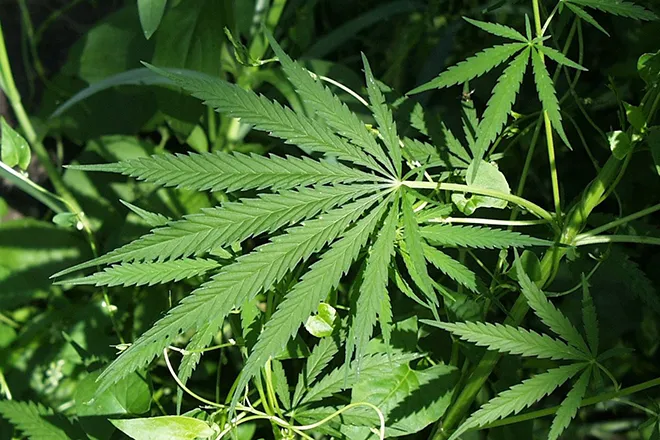
New data: Violent crime is up and also down
Click play to listen to a version of this article. The full story appears below.
(Illinois News Connection) Two key crime reports released by the Justice Department this fall reveal a changing crime landscape, even when they diverge on year-over-year trends. Property crime rose in significant ways for the first time in years. Violent crime against young people doubled. As usual, most crimes go unreported. And as a major election season looms in 2024, the deviation between the reports on recent trends in violent crime could be read selectively to score political points.
The FBI’s crime reporting program and the Bureau of Justice Statistics’ crime victimization survey are generally seen as the Justice Department’s two major pillars of national crime statistics. While the FBI tries to collect crime data directly from more than 18,000 police agencies through its Uniform Crime Reporting program, the National Crime Victimization Survey (NCVS) interviews 150,000 families across the country. The NCVS asks questions that capture crimes that were not reported to police as well as ones that were, which are then weighted in order to estimate crime victimization for more than 120 million U.S. households.
Federal reports show similar long-term trends in violent crime, but diverge significantly on year-over-year changes
Both reports show a return to pre-pandemic levels of violent crime since the COVID-19 pandemic broke out three years prior, and a similar pattern: The violent crime rate exhibited significant fluctuations during the pandemic, but by 2022, it had returned to pre-pandemic levels.
During the pandemic, the country saw a significant uptick in homicides, shootings and aggravated assaults, which likely contributed to the increase seen in data reported by law enforcement. At the same time, violent crime victimizations — which included less acute forms of violent crime, such as assaults without weapons that did not lead to serious injuries — dipped. These violent crime victimizations mostly went unreported.
Murders are a good measurement for the most serious violent crimes, partially because they are almost always reported to police. According to the FBI’s crime statistics, the number of murders dropped by 6.1% from 2021 to 2022, but is still higher than where it was prior to the pandemic.
For some observers, the jump in serious violent crime was always bound to stabilize, as the shock from the early pandemic wore off. “Violent crime rates had been trending down for at least a decade. And when the pandemic hit, unsurprisingly, with this once-in-a-century event, you saw things shift,” said Kim Foxx, state’s attorney for Cook County, Illinois. “As we are coming out of the pandemic, the fact that we are now seeing those numbers trend downward again is not surprising to me.”
Despite the long-term trends, the two reports differ more than ever before on the year-over-year change in violent crime.
Since the methodologies for these two reports are different, it’s not unusual for them to show different trends on a particular year, said Richard Rosenfeld, a criminology professor at the University of Missouri, who recently wrote about this divergence for the Council on Criminal Justice. Over the past 30 years, these two reports’ difference in year-over-year violence trends has never been as big as it was last year.
In 2021, the FBI changed how it collects data from police departments, and as a result, that year’s crime data missed nearly 40% of police agencies. Bureau analysts estimated the missing data with statistical modeling, but the change led to the most incomplete picture of national crime since the FBI began collecting data in the 1930s, which created confusion on how crime trends changed. Last year, the FBI reversed the change and revived the previously-retired data collection system. They also gave agencies that didn’t submit data for 2021 a chance to submit their data retrospectively. Nearly 2,500 agencies took the FBI’s offer and submitted crime data through the old system for 2022, but it’s unclear how many did for 2021.
Experts said the lingering effect of that transition could be why the 2021-2022 trend is unreliable: If the 2021 crime data remains incomplete, it is difficult to compare it with the 2022 data.
These data gaps and disagreements create more space for politicians to spin unsubstantiated, murky narratives. When Florida Gov. Ron DeSantis announced his run for president, for example, he touted that Florida’s crime rate has reached a record-low under his administration. But he failed to mention that he relied on a crime rate estimation that was missing data from about half of the state’s law enforcement agencies, which policed 40% of the state’s population.
The FBI said it cannot address the difference between its crime data and the BJS’ victimization survey because it “cannot comment on another agency's report.”
In an interview, BJS statisticians said there’s no single factor that can neatly explain the divergence — the victimization survey and police statistics are designed to complement each other, and often reflect different aspects of criminal justice and victim’s issues.
“It would be nice to know what's happening with violent crime rates,” said Richard Rosenfeld. “But having two contrasting reports both coming out of the Justice Department enables politicians, or anyone else who has a horse in the race, to just cherry-pick the estimate that fits best with their [priorities] and ignore the other.”
Property crime went up in 2022
While the Justice Department’s two reports diverged on recent violent crime trends, both showed an uptick in property crime from 2021 to 2022: The FBI’s crime data showed a 7.1% increase in property crime, while the victimization survey showed a 14.5% jump.
In both reports, a sharp increase in motor vehicle theft and larceny were the main drivers for the increase in property crime. The former, criminologists said, can be partially attributed to the “Kia Boyz,” whose videos on how to steal Hyundai and Kia vehicles went viral on social media platforms.
In Chicago, the number of stolen Kia and Hyundais jumped 35 times over a couple of months — from 45 cars stolen in May 2022 to more than 1,400 cars stolen that October, according to data compiled by Vice. Data from other major cities, like Los Angeles, Denver and Milwaukee, showed similar trends.
Relentless inflation can also lead to more property crimes like theft and larceny, Rosenfeld said. Last summer, the inflation rate reached 9.1% — the highest in decades — which led many people to trade down on where they shop, and some traded down to purchasing stolen goods. While the inflation rate has since dropped, the 2022 crime data doesn’t reflect its effect yet.
One undeniable trend: Violent crimes against young people doubled
Another trend that both Justice Department reports show is that young people experienced more violence in 2022.
The FBI’s crime data shows that while fatal and non-fatal gun violence against adults declined in 2022, both increased by more than 10% for young people who are under the age of 18. Similarly, the crime victimization survey shows that the violent victimization rate for people between the ages of 12 and 17 doubled last year — from 13 to 27 violent crimes per 1,000 youth, representing the age group that saw the biggest increase in violent victimization.
Researchers have theories on why violence against young people jumped, but caution that little is definitive. Kim Smith, the Director of Programs at the University of Chicago Crime Lab, points to school enrollment as a factor that might be one piece of the puzzle. Nationwide, school enrollment rates fell during the pandemic and are still yet to recover. The Crime Lab has found that in Chicago, a startling 90% of youth shooting victims were not active or enrolled at school at the time they were shot. “Education is the most protective factor against future violence involvement,” Smith said.
Other analysts have pointed to the increase in gun purchases since the beginning of the pandemic, and the sense of danger that many young people feel in their neighborhoods. “We had an influx of guns during the COVID shutdown, and an enormous amount of guns that entered the country and ended up on the streets,” said Jamila Hodge, executive director of the national violence prevention group Equal Justice USA. “That influx is reflected in the numbers of rising violence against young people — it's access to guns.”
Still, most crimes are not reported to the police
While the FBI continues trying to improve the national crime statistics, most property and violent crimes are not reported to the police, the victimization survey shows.
The survey asks victims if they reported crimes they experienced to the police. About 41% of violent crime victims said they reported the incident to the police. But the actual number of violent crimes police recorded is much lower.
While the BJS estimated more than 6 million violent crime victimizations, and estimated more than 2 million of those incidents were reported to the police, the FBI’s crime statistics only recorded 1.2 million incidents. In some incidents, a reported crime is not recorded by the police.
Weihua Li and Jamiles Lartey wrote this article for The Marshall Project.
















